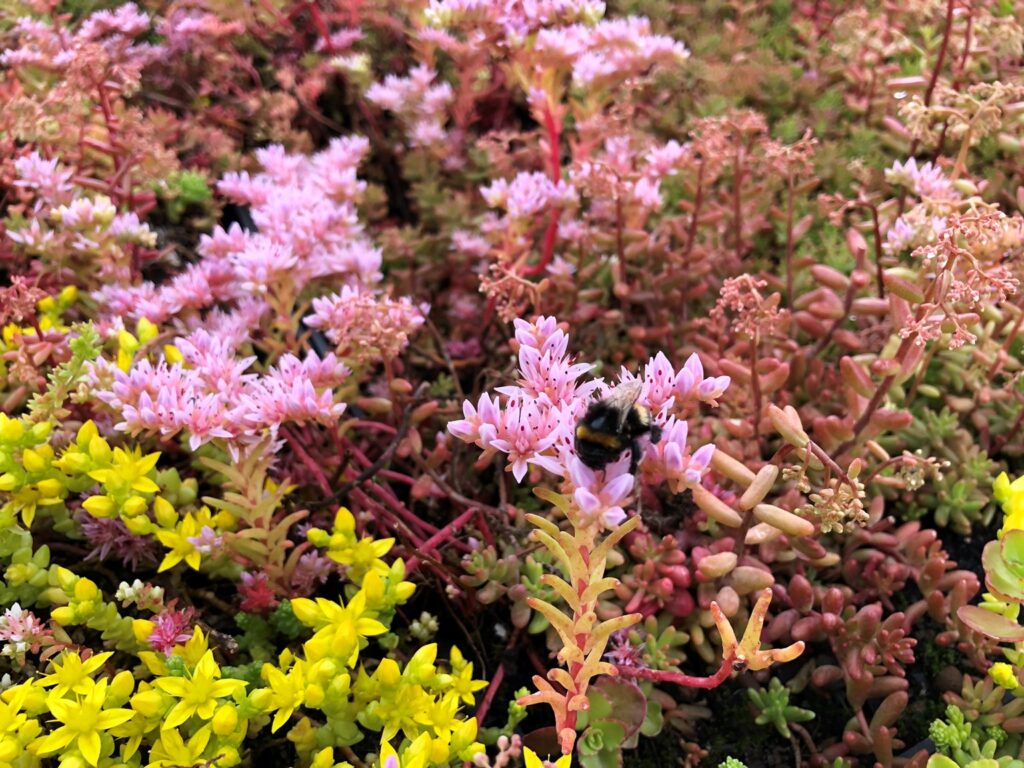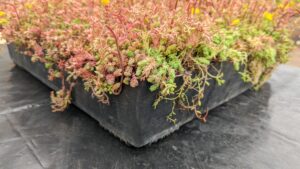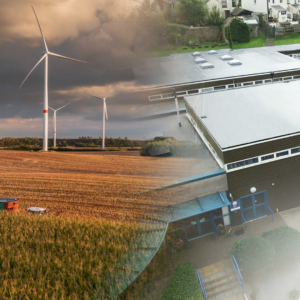Bees are vital to health, food production and the economy but they are under pressure from loss of habitat, pesticides and non-native predator species.
Green roofs – especially sedum roofs – have an important role to play in helping address this by providing a high value food source for pollinators. They are especially important for wild and bumble bees, which are being squeezed out by cultivated honey bees in city centre and urban hives.
Honey bees are larger and hungrier than wild bees – but wild and bumble bees are far superior pollinators; it’s wild bees that need assistance and that’s where green roofs can create sustainable environments packed with bee-friendly sustenance.


WALLBARN’S wildflower and sedum roofs offer a brilliant mix of plants to feed and nourish bees. A wide range of native flowering species ensure maximum diversity. No green roof is too small.
Bees featured at the recent Bee Fayre in Wootton St Lawrence, Hampshire, marking the 400th anniversary of the publication of ‘The Feminine Monarchie’, a seminal study of bees by The Rev Charles Butler. The Archbishop of Canterbury, Justin Welby, gave an address at the festival as patron of the Charles Butler Foundation.
Wootton St Lawrence (where The Rev Butler was vicar) is also home to Wallbarn’s green roof nursery beds. It’s there that it grows sedum and wildflowers for its award-winning, bee-loving modular M-Tray green roof cassettes.



